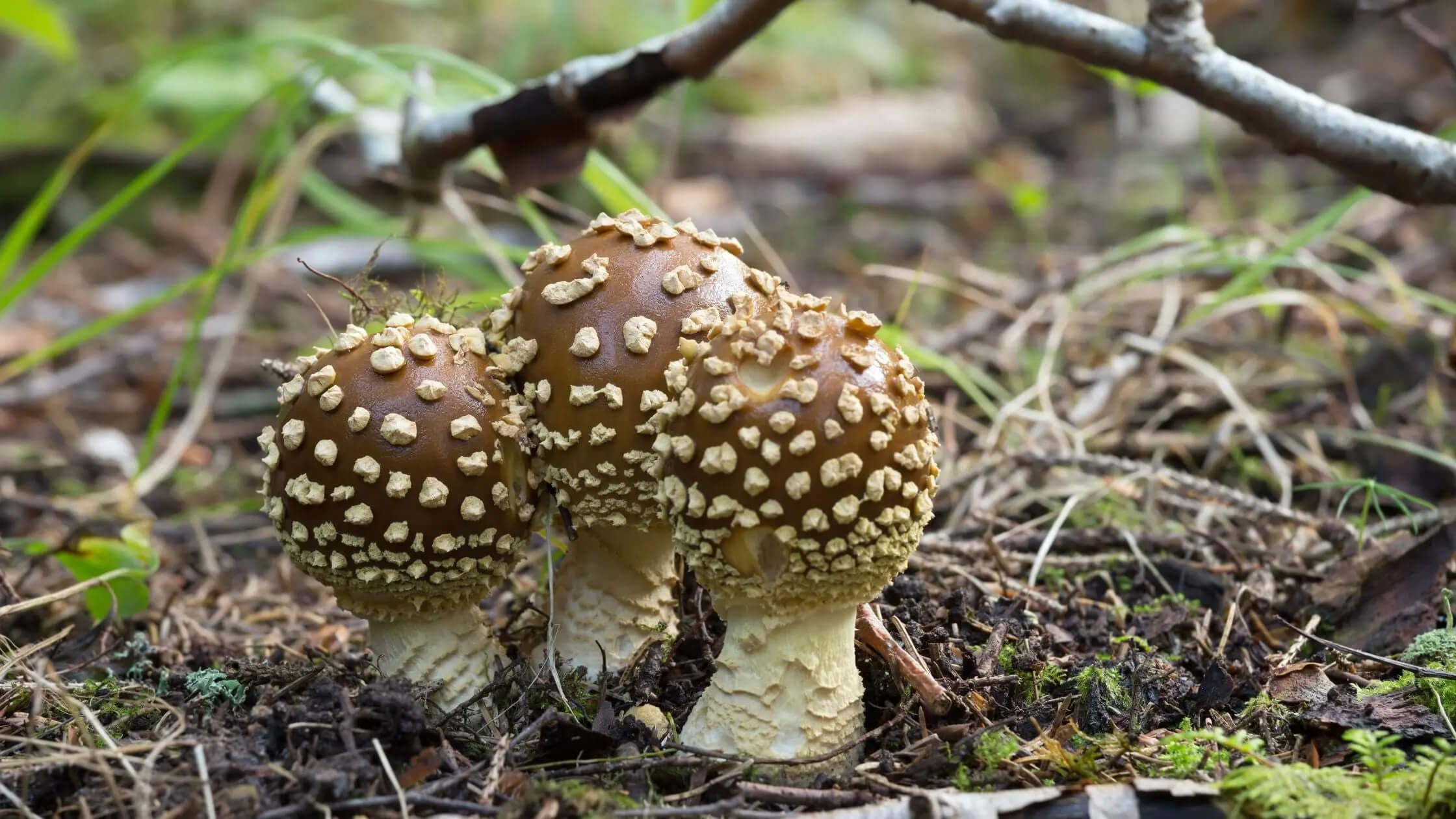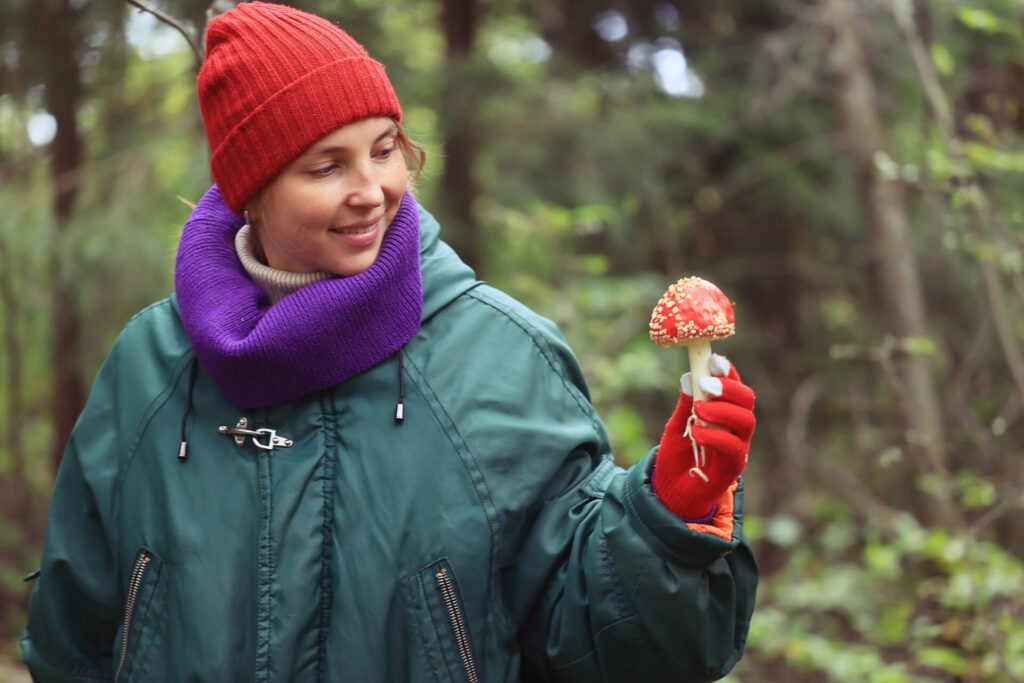When we think of mushrooms, one image often comes to mind—bright red with white spots. That’s the iconic Amanita muscaria, the mushroom of fairy tales, video games, and folklore. But did you know it has a lesser-known cousin, Amanita regalis, or the “Royal Fly Agaric”? While they share some similarities, these two mushrooms each have unique qualities that make them stand apart. Let’s dive into the differences between Amanita regalis and Amanita muscaria and explore what makes them so special.
The First Difference You’ll Notice: Appearance
At first glance, both mushrooms have that signature dotted look with white warts across the cap, but the color is where things really differ:
- Amanita muscaria is your classic bright red-capped mushroom, instantly recognizable and famous in pop culture. With its bright red cap and white spots, it almost looks like something straight out of a storybook.
- Amanita regalis wears a more subdued brown or yellowish-brown cap, making it look a little more earthy and “royal,” which suits its name. While still striking, it’s not as immediately eye-catching as its red-capped cousin.
Where in the World Are They Found?
Another key difference is where these mushrooms grow:
- Amanita muscaria has a widespread distribution across the Northern Hemisphere. From Europe to Asia and North America, you can find it in a variety of forest environments, particularly under birch and pine trees.
- Amanita regalis, however, is more selective. It’s found mainly in northern Europe, especially in Scandinavia, and favors boreal forests with coniferous trees like spruce. Think colder, more remote landscapes.
Toxicity: Handle with Care
Both Amanita regalis and Amanita muscaria are toxic, and both contain psychoactive compounds that can lead to hallucinations. But how do they compare when it comes to potency?
- Amanita muscaria is well-known for its psychoactive properties, thanks to compounds like muscimol and ibotenic acid. Consuming it can cause intense hallucinations, delirium, and drowsiness.
- Amanita regalis also contains these toxins but is often thought to be slightly more potent. Some experts believe that Amanita regalis has higher concentrations of these compounds, making it even riskier to consume.
Amanita Muscaria in Folklore vs. Amanita Regalis in the Wild
Culturally, Amanita muscaria steals the spotlight. You’ve probably seen it in art, movies, or even video games like Super Mario, where it symbolizes the magic mushroom. It’s also famous for its use in Siberian shamanistic rituals, where its psychoactive effects were harnessed for spiritual purposes.
- Amanita regalis, despite its name meaning “royal,” doesn’t enjoy the same level of fame. While it shares similar hallucinogenic properties, it has largely remained in the shadow of its colorful cousin. Still, its “royal” status hints at its unique place in the fungal world for those in the know.
Different Habitats, Different Preferences
Though these mushrooms can sometimes grow in similar environments, they have their own preferences:
- Amanita muscaria is adaptable and thrives in a wide range of forest types, forming relationships with both coniferous and deciduous trees like birch and pine.
- Amanita regalis tends to be a bit pickier, preferring coniferous forests in colder northern climates, particularly in boreal and subalpine regions. It’s most at home in places that are cool, remote, and often overlooked.
Conclusion: Two Mushrooms, One Family, Many Differences
While Amanita muscaria may be the mushroom that everyone knows and recognizes, its cousin Amanita regalis has its own charm, from its royal brown cap to its slightly more potent effects. Both mushrooms are fascinating examples of the natural world’s diversity, each playing its own role in forest ecosystems while capturing the curiosity of foragers, mushroom enthusiasts, and even pop culture.
But whether you’re captivated by the bright red cap of A. muscaria or intrigued by the regal beauty of A. regalis, one thing is certain: these mushrooms are best admired from a distance. Toxic and potentially dangerous, they’re definitely not to be eaten—but they make for one interesting story!




